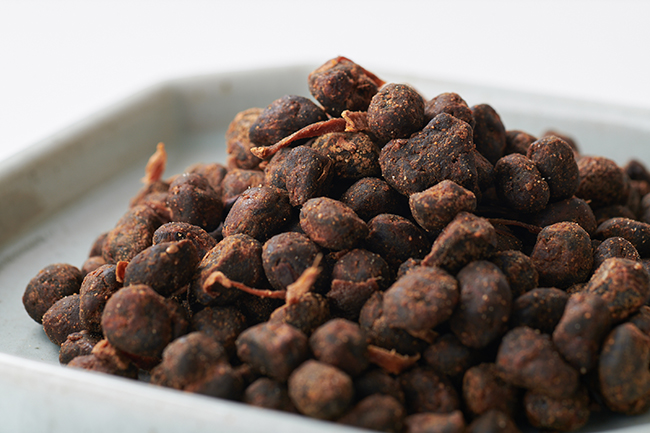Hama Natto: A Modern Take on Japan’s Classic Fermentation
Jul 08,2021
Hama Natto: A Modern Take on Japan’s Classic Fermentation
Jul 08,2021
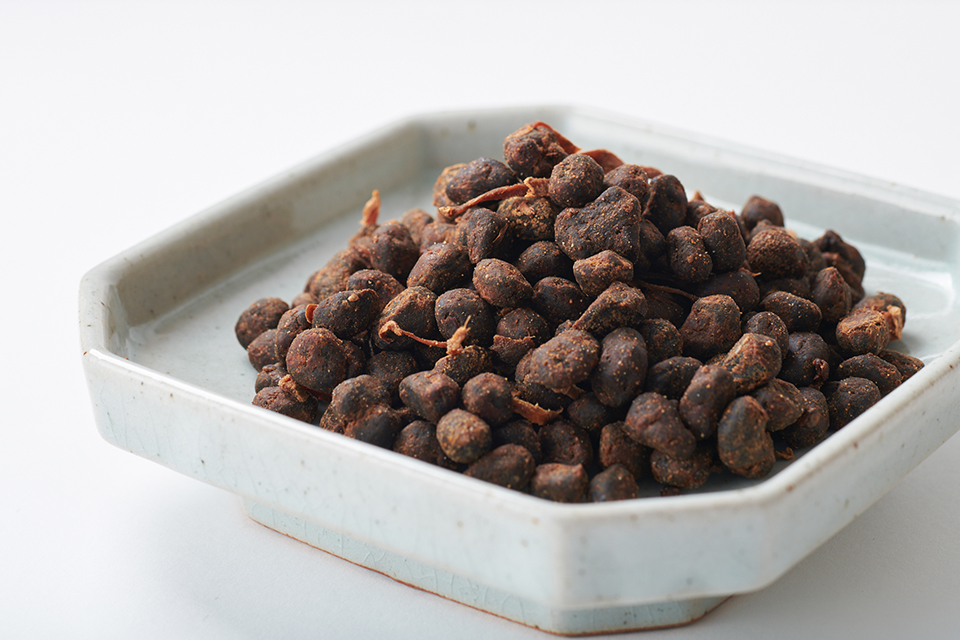

A natto without the stringiness of natto. A deep brown natto that retains the shape of its soybeans. This is hama natto, from Hamamatsu, Shizuoka, a fermented food said to be a favorite of Tokugawa Ieyasu, the first shogun of the Tokugawa Shogunate.
Yamaya Soy Sauce, a venerable company established in 1850, has continued to produce hama natto for decades. We spoke with the company’s seventh-generation president, Kinpara Toshiyuki, about his passion for hama natto and the local region.
Although it has natto in its name, hama natto differs from regular itohiki [stringy] natto in both taste and aroma. It is produced differently as well, since it does not use the natto bacteria found in itohiki natto. Rather, steamed soybeans are fermented with koji mold, left to age in saltwater, and then dried in sunlight.
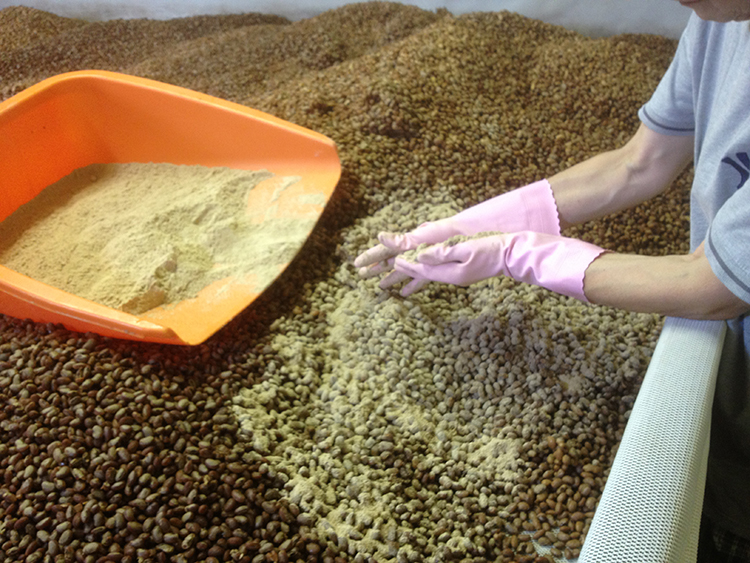
The process of inoculating the koji mold in the steamed soybeans is done carefully by hand
“The only ingredients are soybeans, salt, and ginger. No other seasoning is added; the umami is condensed in the soybeans solely through the power of fermentation and aging. The flavor of hama natto is similar to that of miso or soy sauce, but it’s deeper and richer than miso. This is why people have loved it for generations, either as an accompaniment to rice or as a snack with drinks.”
Hama natto is said to originate from touchi [fermented black beans], which came to Japan from China at the same time as Buddhism. It was named natto in Japan because it was made in the storage rooms [nassho in Japanese] of temples. It was also called tera [temple] natto or shiokara [salty-spicy] natto from where it was produced and its taste, respectively.
When hama natto was presented to the young Tokugawa Ieyasu at Hamamatsu Castle, he reportedly took a great liking to it. The area around present-day Hamamatsu was then called Hamana, so it is said that Ieyasu would ask: “Is there any more of that Hamana natto?” This led to it being called hamana natto, which was later shortened to hama natto.
“Hama natto, which lasted for a long time and was easy to carry, was apparently highly valued even in battle as a source of precious protein. Given that Ieyasu was known to be a health nut, he likely recognized its nutritional benefits as well. The production method for hama natto today remains largely unchanged from those times. When you think that we might be eating the same thing as Ieyasu, it’s pretty astounding.”
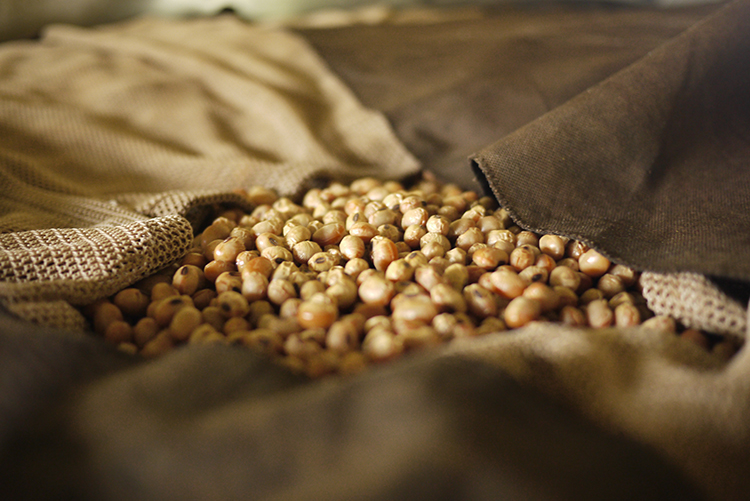
All the processes, aside from temperature control, to produce hama natto are done manually. Each soybean is carefully inoculated with koji mold and then left to age for 12 to 15 months in saltwater. Though the work is labor intensive and time consuming, Kinpara says: “The work simply must be done by hand in order to preserve the shape of the soybeans and bring out the umami.”
“Microorganisms and enzymes are the stars in the hama natto production process. Our role as humans is simply to regulate the environment so the microorganisms can function more readily. We approach our work each day with the mindset that we are not making a product, but rather being allowed to help the fermentation.
“We use cedar barrels to age hama natto. The advantage wood has over something made from metal or ceramics is that mold thrives on wood. There was a time once when we decided to clean the room where we make hama natto until it was spotless. Within about two months, the hama natto turned out horrible. This experience convinced me that though they are invisible to us, microorganisms dwell in here and help make the hama natto taste better.”
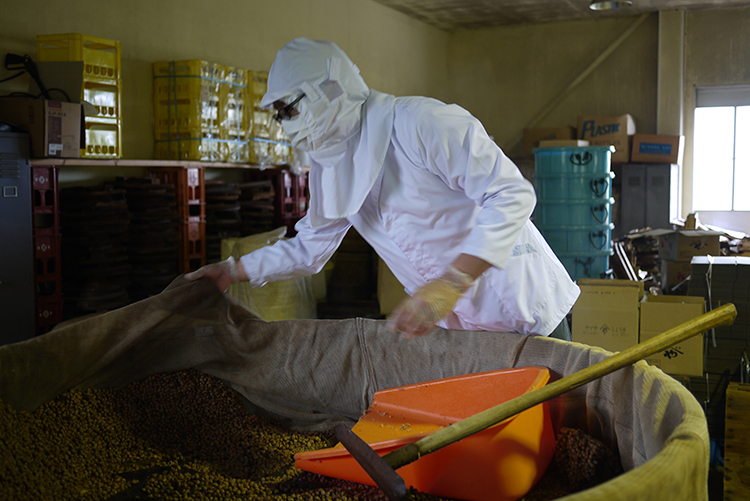
Because of its very distinctive taste, hama natto tends to be divisive, and it is treated as a rare delicacy. Even Kinpara, whose ancestors made hama natto for generations, admits that he only began to think hama natto was delicious once he reached adulthood. As a child, he disliked it.
Traditional foods are often perceived negatively as being old-fashioned or having peculiar tastes. To dispel such negative images, Kinpara came up with the idea of using hama natto as a seasoning.
“For example, adding finely chopped hama natto to mapo tofu gives it a rich, deep flavor like you’d find in a fine mapo tofu restaurant. You can add some to a freshly made curry to give it a deeper flavor, as if you had let the curry sit overnight. Just a little bit of hama natto as a secret ingredient can transform your everyday meals.”
Hama natto can be used in a wide variety of cuisines besides Japanese, such as Chinese, Italian, and ethnic dishes. Yamaya Soy Sauce shares various creative recipes using hama natto on its website and on recipe sites.
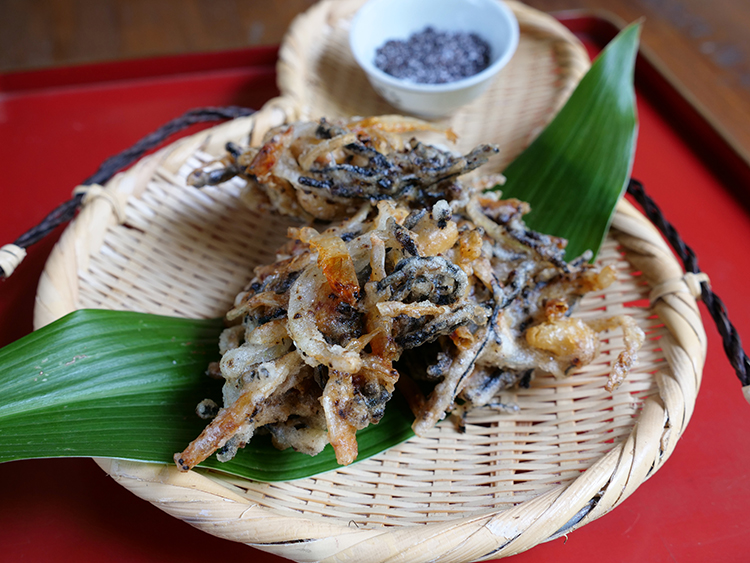
Mixed hijiki seaweed and sakura shrimp tempura with chopped hama natto features a crispy batter with the deep exquisite flavor of hama natto
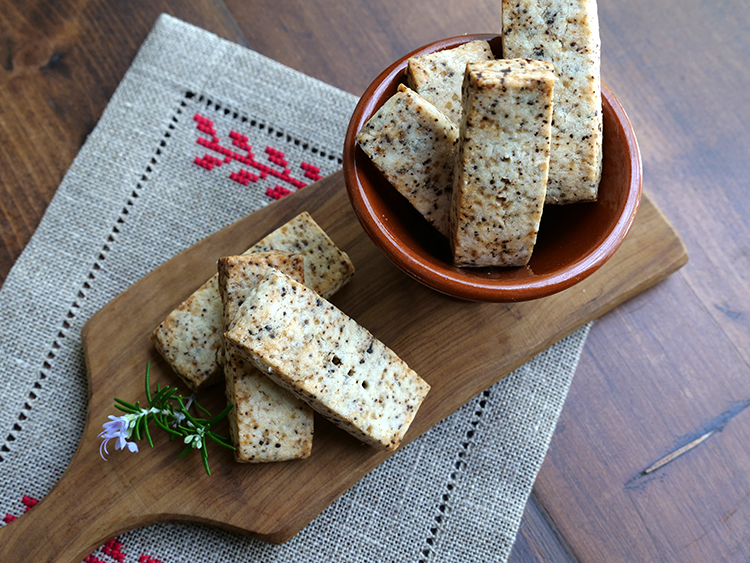
Chopped hama natto can also be used in confectionery, such as these sablé biscuits
“My wife comes up with most of the ideas for these new recipes. She’s not a professional chef, and all the recipes are easy to make at home. Even dishes that we think probably won’t work with hama natto turn out to be surprisingly delicious. We hope that many people will try these new ways to enjoy hama natto.
“One of our most popular products is fermented umami oil, which is a combination of hama natto and extra virgin olive oil. It was one of several recipes we put out at a tasting event and the reaction was overwhelming. We responded to the positive feedback and developed it into a product.”
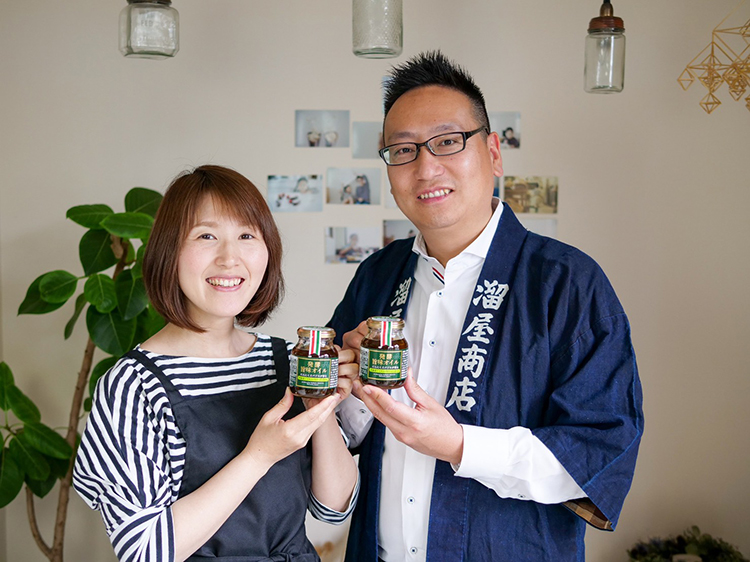
Kinpara Toshiyuki and his wife, Kae
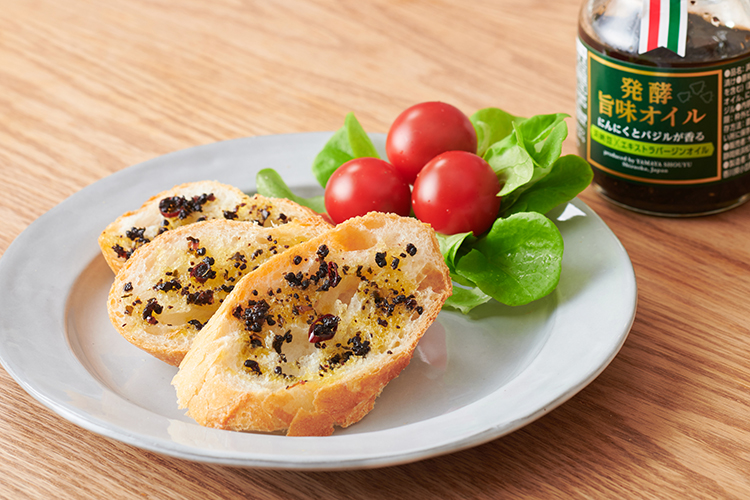
The fermented umami oil can be used on nearly everything
“In our modern age, taking over a year to make hama natto by hand seems like an inefficient production method. However, if we believe in preserving our traditions, then some aspects must remain unchanged. On the other hand, simply preserving traditions is not enough to make their benefits and goodness well known. At our company, we strive to strike a balance between preservation and innovation and suggest ideas that align with modern diets and lifestyles.”
Hama natto is used in lunches at elementary and junior high schools in the area. Kids love simmered dishes and mapo tofu in which hama natto has been added as a secret ingredient. Curry with added hama natto is called affectionately Ieyasu curry.
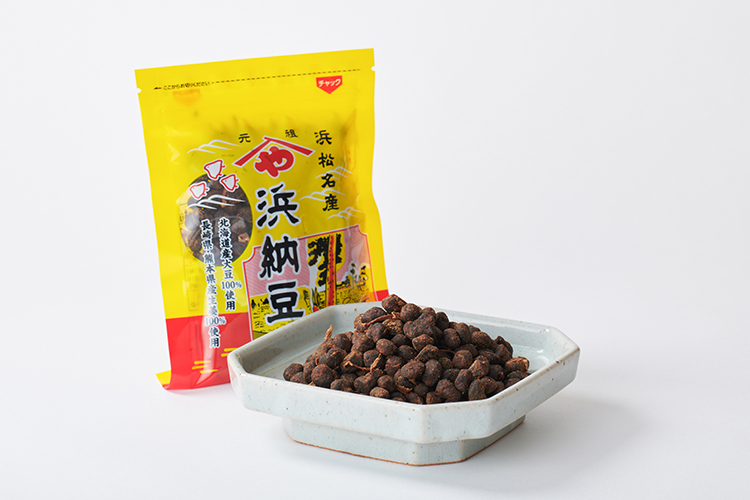
“I sometimes visit elementary schools to talk to the kids about how hama natto is made and about fermented foods. Fermented foods are a part of Japan’s wonderful traditional food culture. I want kids, who are the future, to eat as many healthy foods as possible and to understand our traditional food culture in this region. I would be delighted if hama natto could serve as a gateway for people to rediscover the attractions of fermented foods.”
